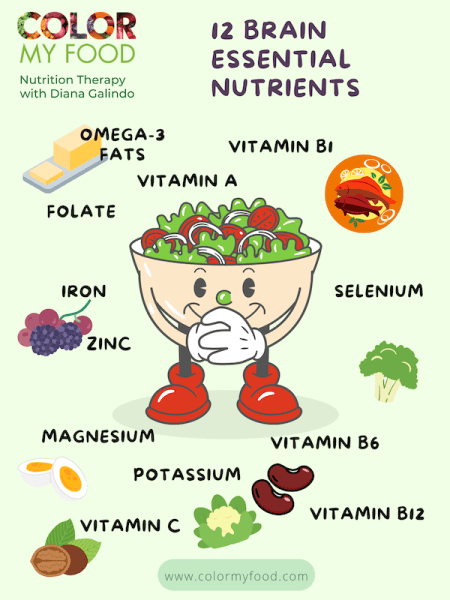There’s probably nothing more confusing about food than fat. It’s the most misunderstood macronutrient and can negatively impact our health.
It seems we eat too much of the wrong fats and not enough of the good fats. Added to which, a phobia of fats spawned innumerous “low-fat” products that replace fat with sugar creating more health hazards.
Here’s my take after working through innumerous articles, books and online sources.
- Fats are essential for healthy living
- There are good fats and bad fats
- Moderate use of good fats is best
[su_expanding_quote_book alignment=”full” source_author=”Patrick Quillin” source_title=”Beating Cancer with Nutrition” full_quote=”Human health is highly dependent on the quality and quantity of our fat intake. Most Americans eat too much fat and the wrong kind of fat AND do not get enough of the essential fatty acids that should be in our diet, hence the need for dietary changes and supplements.” short_quote=”Human health is highly dependent on the quality and quantity of our fat intake”]
Good fats are necessary for proper brain function, a strong immune system, hormone production, strengthening cell walls, joint lubrication, organ protection and a healthy nervous system. A high-functioning happy brain is partly a result of the quantity and quality of fat we eat. Healthy fats are clean and sustainable sources of energy. They help us absorb and transport vitamins and phytochemicals, help us detox, and increase metabolism.
[su_expanding_quote_book alignment=”right” source_author=”Nina Plank” source_title=”Real Food: What to Eat and Why” full_quote=”Fats are necessary for health. Fats in the omega family are called essential because the body cannot make them; we must get them from foods. The brain relies on omega-3 fats; deficiency causes depression. Without fats, the body cannot absorb the fat-soluble vitamins A, D, E, and K. Fats are key to many other functions including building cell walls, immunity and assimilation of minerals like calcium.Digestion is impossible without fats. The cell membrane controls the muscles of the gastrointestinal tract. Fats stimulate the secretion of bile acids, which are essential for digestion. Without fat, digestion literally fails you and you starve—even if you are eating plenty. Today, overeating low-quality food is more often the cause of poor nutrition than starvation.” short_quote=”Fats are necessary for health. Fats in the omega family are called essential because the body cannot make them; we must get them from foods”]
So what are good fats? Essential fatty acids: omega-3s and omega-6s. Essential fatty acids cannot be produced in our body. Ideally, we should get equal amounts of omega-3 and omega-6 fats because they have equally important but different effects in the body. But the Standard American Diet provides insufficient omega-3 and too much omega-6. This is what leads to inflammation and disease: obesity, diabetes, heart disease, cancer and depression.
[su_expanding_quote_book alignment=”full” source_author=”Richard Beliveau PhD and Denis Gingras PhD” source_title=”Foods to Fight Cancer” full_quote=”Omega-3s are an essential ingredient in an anticancer diet, and they protect against heart disease too. The ratio of omega-3 and omega-6 fatty acids obtained through the ancestral diet was probably around one to one, but the ratio has become more like twenty to one! This imbalance may have negative repercussions on the development of chronic diseases such as cardiovascular disease and cancer. Increasing the intake of omega-3 may significantly reduce the risk of all inflammatory ailments, including cardiovascular disease and cancer.” short_quote=”Omega-3s are an essential ingredient in an anticancer diet, and they protect against heart disease too”]
Good sources of essential fatty acids are those that come from nature: avocados, nuts, seeds, extra-virgin olive oil, flaxseed, fatty fish, grass-fed beef and butter and pastured eggs. Good fats are healthy in moderation.
Bad fats are man-made industrial fats such as refined vegetable oils processed under high heat, which makes them rancid and carcinogenic. These oils include corn, safflower, sunflower, soybean, and synthetic trans fats. They have too much omega-6 leading to inflammation, which leads to disease.
Trans fats are the worst for our health. They’re formed by hydrogenation in which unsaturated fats are pelted with hydrogen atoms to make artificially saturated fat. That’s how firm margarine is made from liquid corn oil. Hydrogenated oils are solid at room temperature and shelf-stable, making them useful for processed foods. But trans fats cause heart disease, and other maladies. Fast food and processed foods are loaded with industrial (bad) fats.
[su_expanding_quote_book alignment=”right” source_author=”Kris Carr” source_title=”Crazy, Sexy Cancer” full_quote=”Vegetable oil is heavily processed under high heat and pressure turning into trans fats, which distorts fat molecules in a way, your body can’t recognize as food. These fat molecules cause inflammation, cardiovascular harm, liver, kidney and bowel stagnation and accelerate the aging process.” short_quote=”Vegetable oil is heavily processed under high heat and pressure turning into trans fats, which distorts fat molecules in a way, your body can’t recognize as food”]
Health problems associated with a high-fat diet come from consuming processed oils and trans fats, and too much animal fat.
What to do?
Moderate use of good fats is beneficial. Essential fatty acids increase the absorption of immune system-supporting micronutrients and phytochemicals. For example, an olive oil or nut-based salad dressing helps the body absorb more of the carotenoids and certain nutrients in raw vegetables. This can help minimize heart disease and diabetes. The key is moderation.
I choose to avoid bad fats: hydrogenated (vegetable) oils (fast food is cooked in it), junk food and processed foods loaded with industrial fats. I don’t buy or cook with corn, safflower, sunflower and soybean oils.
Instead I choose fats close to nature, and try to use them in moderation:
- Extra-virgin olive oil
- Unrefined coconut oil
- Avocado oil
- Butter and milk from grass-fed cows; better ratio of good omega-3, and minus the hormones and antibiotics of factory farmed animals (high in bad omega-6)
I also use expeller-pressed canola oil ocassionally for cooking because I trust Dr. Andrew Weil.
For further health empowerment check out:
The Problem with Refined Oils
How to Find and Avoid Trans Fats
Separating Fat from Fiction

